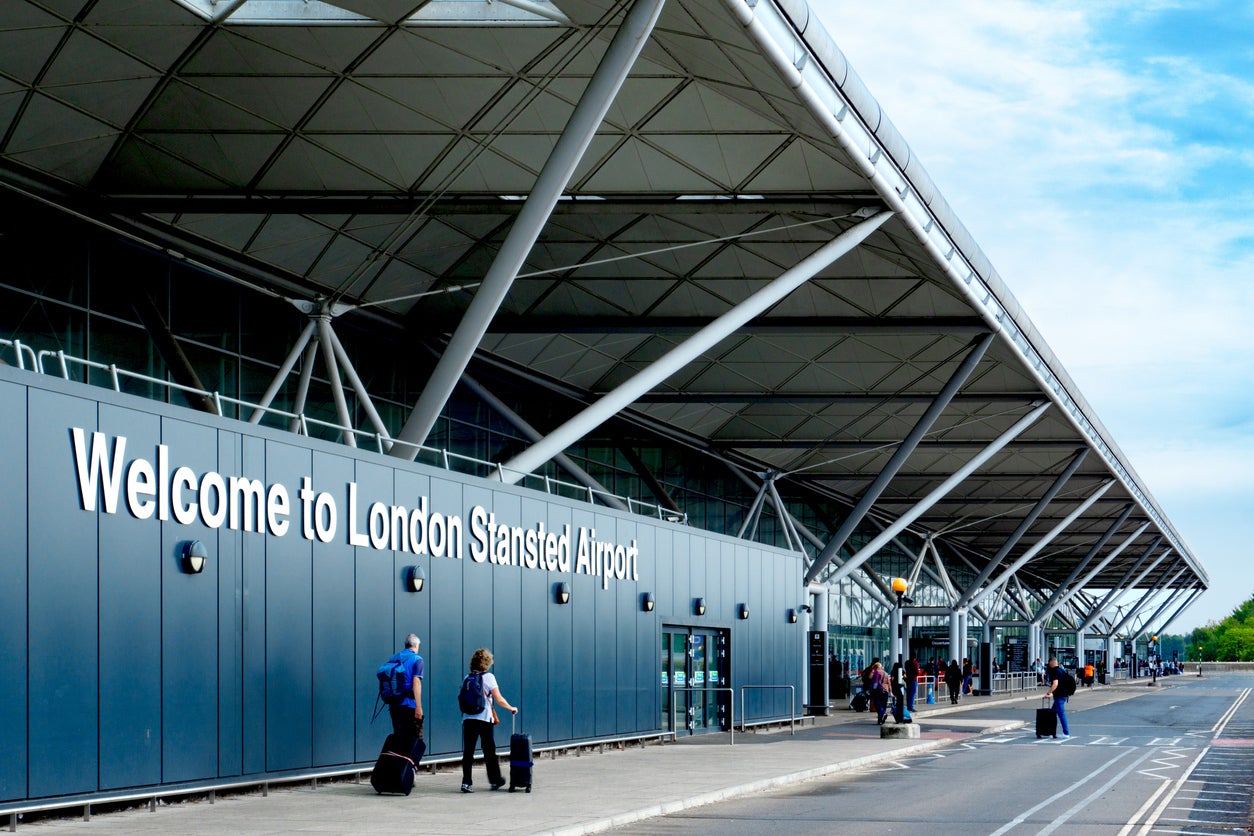Could the idea of a second runway at Stansted take off?
Simon Calder answers your questions on visiting Japan in April, airline protocols on deceased passengers, security scanners at UK airports, and the possibility of a bigger Stansted


Q We’ve heard new runway plans for Heathrow and Gatwick airports this week. I live near Stansted and am interested, both as a local and a user, whether talk of a second runway is now dead in the water.
Chris B
A I feel I have been covering the debate about airport expansion in southeast England almost since the dawn of time, and have surveyed all the possible locations for new runways.
Stansted airport, northeast of London, is the third biggest serving the capital after Heathrow and Gatwick. In terms of resilience and smooth operations, the Essex airport could certainly use a second runway.
Its sister airport, Manchester, handles roughly the same number of passengers – 30 million annually – and has two runways. Manchester Airports Group owns both facilities, and knows the advantages of having extra capacity. But it has no intention in the next decade or two to begin the long, expensive and uncertain process involved in seeking permission to build a second runway at Stansted.
Like other single-runway airports in southeast England, though, Stansted plans to increase flights and passengers to extract more productivity from its precious strip of asphalt. In September 2024 the airport announced an upgrade that includes extending the main terminal, improving one of the two slightly odd satellites and making the taxiways more efficient.
In addition, surface access should improve with upgrades on the road link from the M11 motorway and the Stansted Express rail service from central London. All of this is intended to boost annual passenger numbers by as much as 70 per cent by the early 2040s to 51 million. For comparison, Gatwick currently files about 45 million passengers a year.
So Stansted will certainly be busier, and the hope is that there would be much more choice beyond the current range of European destinations (and proportionally less reliance on the dominant airline, Ryanair). From a passenger perspective, you can expect more choice and competition.

Q Our daughter is working in Kobe, Japan, for five months. We want to go out and see her for about 10 days in late April. Can you recommend where to visit in wider Japan? We will be flying from Manchester airport.
Gary R
A Ten days is just long enough to make the most of a slice of Japan. As long as you don’t try to squeeze too much in, you are guaranteed a fun and fascinating visit.
I shall start with flights. Fly outbound to Kansai – the amazing island airport, very close to Kobe. But buy open-jaw tickets, travelling inbound from Tokyo (choose the capital’s handy Haneda airport rather than distant Narita if you possibly can). To keep the journey time as short as possible, and the cost down, consider a Chinese airline. Carriers from the People’s Republic fly over Russia between the UK and east Asia, sharply reducing the flight time compared with Western airlines.
Kobe is an excellent introduction to Japan: a medium-sized port city, with plenty of interest. It is also conveniently close to the imperial marvels of Kyoto and the smaller and even prettier Nara. You will be there at the end of the cherry blossom season, and hopefully the trees will still be putting on a show.
Next stop, by the hyperefficient bullet train or a cheaper coach: Fuji-Hakone-Izu National Park, a great location to appreciate the volcanic landscape. A high-speed narrow-gauge train will then whisk you to Tokyo, where you could easily spend a further 10 days without seeing everything.
My highlights in a city where simply wandering is a constant joy: Shinjuku, the highest-rise quarter, a study in human hyperactivity. The Imperial Palace East Gardens, a study in order. And the retro, 1960s science-fiction monorail out to Haneda airport – a fitting way to end your journey.

Q I read about the Australian couple who had to sit next to a deceased fellow passenger for hours on a flight to Qatar. Do airlines have protocols for this sort of tragic situation?
Name supplied
A This sad event took place on a scheduled Qatar Airways flight from Melbourne to Doha, a journey of about 14 hours. The couple, Mitchell Ring and Jennifer Colin, were en route to a holiday in Italy when a woman collapsed in the aisle after going to the restroom. Accounts say that the cabin crew performed professionally and courageously in trying to revive the passenger, which is in line with the advice of the International Air Transport Association (Iata).
Cabin crew are required to continue CPR until turbulence or other flight-safety issues intervene; or until the aircraft has landed and care is transferred to emergency medical services; or they are too exhausted to continue; or – as in this case, the person is presumed dead.
If there is an onboard death, the first concern is naturally with the dignity of the deceased and the care of anyone travelling with them. The key issue is how best to deal with the person. They are generally seated, with the seat belt fastened, away from other passengers, and covered with a blanket. On a full flight, it is a particularly difficult situation; the Iata advice is: “If the aircraft is full, put the person back into his/her own seat, or at the crew’s discretion, into another area not obstructing an aisle or exit.” In this case, it appears that seats were available, and if so it is surprising that the couple were not both moved.
Why didn’t the aircraft divert? Well, diversions for medical emergencies happen fairly frequently, often with positive results. But in the case of a confirmed onboard death, standard practice is to continue with the flight. While that might seem uncaring, the alternative at the stage of the Qatar Airways journey when the woman passed away would be to divert to an airport in southern India – probably Kochi or Mumbai. That would have caused massive logistical problems for the airline and its passengers, few of whom would have permission to enter India, and yet all of whom would be stuck because the crew would have run “out of hours”.

Q Has all the money and time spent on the upgraded security scanners at UK airports achieved anything?
Chris McM
A Most airline passengers find the worst part of any journey is the airport security check on departure – in particular, the meagre limit on LAGs (liquids, aerosols and gels) in cabin baggage, as well as the obligation to extract electronics such as laptops and tablets. The liquids rules were introduced hastily worldwide in 2006 as “a temporary measure” to protect against explosives being assembled on board planes. Despite repeated promises to lift them, they remain in place.
After a series of extended deadlines, all the major UK airports were supposed to have fancy new scanners in place by June 2024 that allowed up to two litres of liquids and for devices to remain in place. They use computed tomography – the same technology as medical scanners – to analyse the molecular structure of the contents of a passenger’s bag. Some airports complied with the deadline but the big four UK hubs – Heathrow, Gatwick, Manchester and Stansted – were running behind. All of which proved irrelevant because progress in aviation security actually went into reverse.
Last midsummer, the Department for Transport ordered airports with the new equipment to restore the old 100ml limit on LAGs. This was described at the time as a “temporary move” to “enable further improvements to be made to the new checkpoint systems”. The new equipment appears to be misidentifying many innocuous items in passengers’ baggage as posing a threat. The reintroduction of the old rules mean that the new scanners can pass bags that would otherwise be rejected. The aim is to speed up the process and reduce queues.
In practice, the tens of millions of pounds spent on new equipment has made life slightly easier: bags of toiletries and laptops generally do not need to be extracted when your possessions go through one of the new scanners. But in aviation security, “temporary” can be a long, long time.
Email your question to s@hols.tv or tweet @SimonCalder
Join our commenting forum
Join thought-provoking conversations, follow other Independent readers and see their replies
Comments